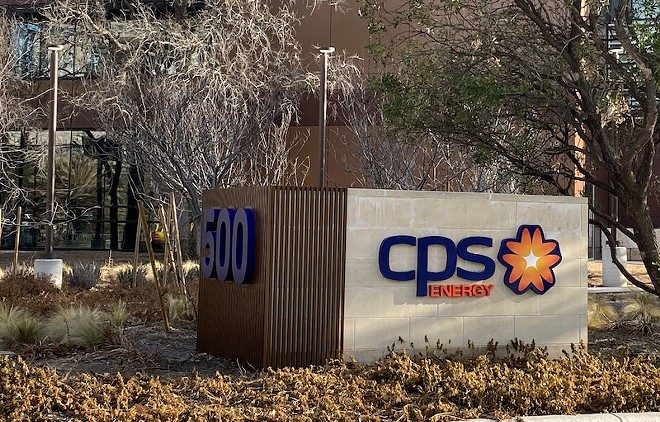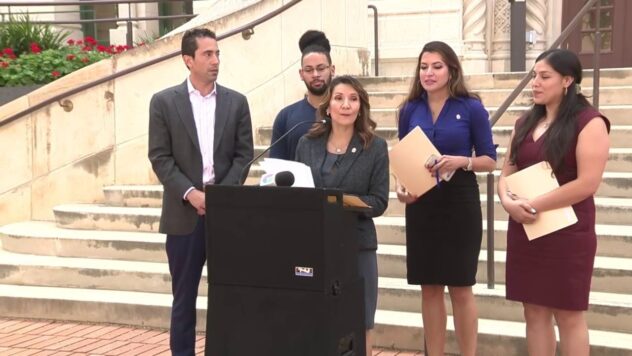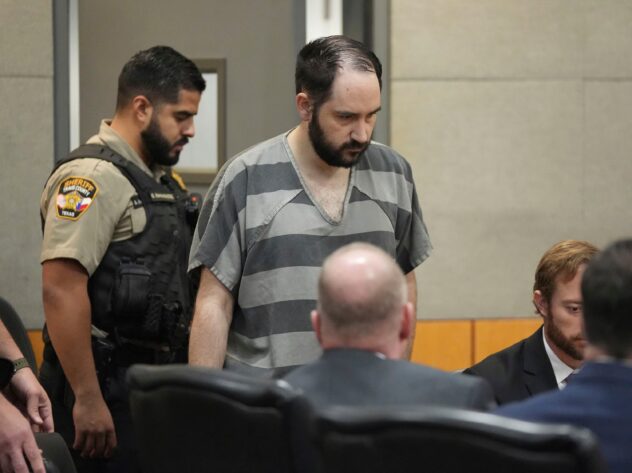Board of San Antonio’s CPS Energy votes to phase out coal plant, replace it with natural gas


Sanford Nowlin
The board of CPS Energy voted to keep fossil fuels in the mix until 2065.
CPS Energy’s board of trustees took the middle road in reducing carbon emissions by voting Monday afternoon to move away from burning coal at its Spruce power plant and convert it to burning another fossil fuel, natural gas.
The board of the city-owned utility cited electric reliability for its choice, while pledging to phase in additional renewable resources. The plan would reduce carbon emissions at a lower fiscal cost than moving more heavily to renewables, they added.
Environmentalists who spoke during the meeting’s public comment period said the plan, which keeps fossil fuels in the mix until 2065, doesn’t go far enough fast enough to address the looming climate crisis.
“Today, I’m not happy that we will have a gas plant until 2065,” said Emma Pabst, who represented environmental group Sierra Club’s Beyond Coal Campaign. “Fracked gas is a major pollutant.”
San Antonio joined many other U.S. cities in recent years in committing to reduce carbon emissions by 80% in step with the global Paris Climate Accords. CPS Energy has a zero carbon emissions goal by 2050.
The board considered nine potential plans in advance of the vote, and the one heaviest on renewables would come with price tag higher than most of the others. CPS staff and consultants involved in the study also pointed to reliability of natural gas as part of the transition phase when wind, solar and storage technology now available can’t yet fill demand, particularly during brutal South Texas summers and devastating cold like 2021’s Winter Storm Uri.
Board member Francine Romero said the deliberation to support the compromise plan was difficult because putting more natural gas in the mix, while providing reliability, could slow the utility’s ability to mitigate climate and health concerns.
Another compromise plan called for more wind in the mix faster but likely falls short on reliability and the ability to ramp up wind-power sources fast enough, according to CPS Energy.
The plan adopted by the board does call for more wind energy, but power transmission from West Texas windmills is expensive. CPS Energy CEO Rudy Garza says the utility will go after coastal wind and “close the gap with an uptick in solar.” Some of that could come from more community solar from sources including home rooftops to covered parking.
“I don’t want to bury the lead here, and that’s that we are ending the use of coal by 2028,” said San Antonio mayor and CPS board member Ron Nirenberg, who signaled his choice of the compromise plan in advance of the vote. “We are closing several decades before we had planned to.”
The Spruce 1 coal plant was built in 1992 and had an expected technical lifespan into 2047. The Spruce 2 coal-burning plant — constructed in 2010, even as CPS was investing in more solar-produced electricity — has a life span until 2065.
One Spruce unit will be converted to natural gas under the just-adopted plan, which could change with technology improvements. Natural gas is expected to be part of the mix until 2065.
Nirenberg said the plan meets CPS Energy goals to remain cost competitive and reliable while putting in place a process to meet the city’s Climate Action & Adaptation Plan (CAAP) goals. Those include CPS reaching zero carbon emissions by 2050.
“This needs to be integrated into everything we’re doing on an annual basis,” and not an every two- to three-year review, the mayor said. “We need to be committed to simulations.”
Nirenberg encouraged the rest of the CPS board and the utility’s staff to continue improving and accelerating community solar initiatives and better manage energy demand. Usage, he added, “is going up more than we’d like it to.”
Several college students on their own or as a voice for young environmentalist groups spoke up about the plan, urging more decisive action. Nirenberg encouraged them to stay involved to push the agenda forward when they are in leadership positions.
Still, several told trustees their decision not to move away from natural gas produced by fracking was a mistake.
“The long-term effects of climate change will be felt in my generation,” said Isabella Nieto, a student at San Antonio College and a member of the local chapter of equality and social justice group Texas Rising.
Sierra Club identified the Spruce coal facility as having the sixth-highest power plant emissions in Texas. Local and state members of the environmental group lauded the board’s decision to do away with coal, but their plaudits stopped there.
During comments aimed at getting the board to commit to bigger changes now, Pabst of Sierra Club’s Beyond Coal Campaign said renewable energy will become more affordable and that energy storage technology is improving.
Board Chairman Willis Mackey said he traveled to Atlanta with CPS Energy CEO Garza to see storage equipment that can store up to 100 hours of power from sources such as wind and solar. Other CPS representatives have been to New Orleans and as far away as Australia to investigate energy storage technologies.
Representatives from the San Antonio Manufacturers Association and the San Antonio Chamber of Commerce advocated for the natural gas conversion plan as long as it keeps rates low and energy reliable for their business members.
A few San Antonio residents addressing the board ahead of the vote focused on cost alone, saying that CPS had to make a decision that would provide cheap power for ratepayers in low-income areas of the city.
The lone holdout on the plan was CPS trustee John Steen, a conservative who’s served on state commissions by appointment of Republican Govs. Rick Perry and Greg Abbott.
Steen said he couldn’t support the high cost of implementing the plan when CPS was facing rapidly declining scores in ratepayer satisfaction surveys and the utility is still $200 million in arears on paying for the massive natural gas power bill from the deep freeze of February 2021.
“I consider the financial health of CPS Energy to be alarming,” Steen said. “This board is committing this system to expenses that will stress ratepayers.”
Follow us: Google News | NewsBreak | Instagram | Facebook | Twitter














